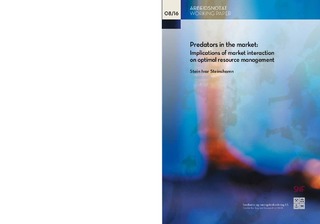Predators in the market : implications of market interaction on optimal resource management
Working paper
Permanent lenke
http://hdl.handle.net/11250/2431347Utgivelsesdato
2016-11Metadata
Vis full innførselSamlinger
- Working papers (SNF) [809]
Sammendrag
A two-species bioeconomic model is analyzed, but in contrast to most similar models, there is no biological interaction between the species, only economic. The interaction takes place in the market where the quantity of either species may affect the price of the other. The effects of cross-price elasticities on the optimal steady state and on the optimal paths in the sole-owner case are investigated both analytically and numerically. First, it is shown that whether cross-price elasticities have impact on the steady state or not, depends heavily on the technology in the fishery (e.g. purse seine versus trawl). Further, in the case of linear demand functions, the steady state outcome depends solely on the sum of the cross-price parameters and not their individual values. This is shown analytically. Secondly, in the investigation of optimal paths, numeric methods must be resorted to. It is shown that cross-price elasticities have interesting effects on the paths. More precisely, when cross-price elasticities are present and are sufficiently high, the paths go from being monotonic to feature over- or undershooting.
